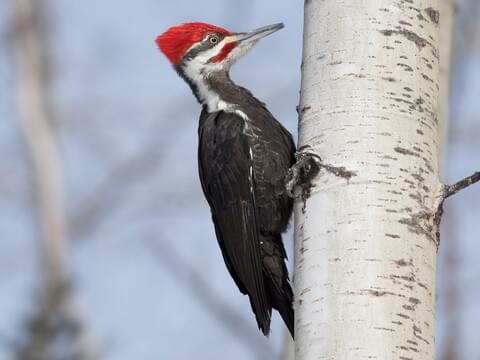Woodpeckers in Florida: Natural History, Ecology, and Preservation
Woodpeckers in Florida: Natural History, Ecology, and Preservation
Blog Article
Discover the Fascinating Globe of Woodpeckers: Everything You Need to Know
The globe of woodpeckers is a world filled with one-of-a-kind actions, intricate adjustments, and a varied selection of species. From their habitats and circulation patterns to their feeding habits and specialized physiological attributes, woodpeckers have long captivated the interest of ornithologists and nature lovers alike.
Woodpecker Habitats and Circulation
Woodpeckers inhabit a varied variety of settings worldwide, showcasing flexibility in their distribution patterns. These resistant birds are discovered in woodlands, forests, savannas, and deserts across different continents, showing their capacity to thrive in different climatic problems. In North America, for instance, woodpeckers can be found in both coniferous and deciduous forests, using their solid beaks to forage for bugs and produce nesting tooth cavities in trees. In a similar way, in Africa, particular woodpecker varieties have actually adjusted to dry settings, such as the acacia timberlands, where they play an important role in regulating insect populations.

Feeding Behaviors and Diet
Among the numerous aspects of their habits, woodpeckers exhibit distinctive feeding habits and dietary preferences. These birds are mainly insectivores, with a diet that includes ants, beetles, caterpillars, and various other bugs discovered in trees. Woodpeckers utilize their strong beaks to drill right into the bark of trees, probing for bugs and larvae concealed beneath the surface. In enhancement to pests, woodpeckers additionally eat nuts, seeds, fruits, and sap. Some species have specialized tongues with barbed ideas that help them extract pests from crevices in wood.
Woodpeckers are understood for their drumming habits, which offers not just to interact with other woodpeckers yet additionally to situate food. The quick drumming sound is created by the bird pecking on powerful surfaces like dead trees or metal poles. This behavior can draw in insects concealed in the wood, enabling the woodpecker to spot their presence and prey on them.
One-of-a-kind Adjustments for Tree Climbing
In their skilled search of pests hidden within tree bark, woodpeckers have progressed impressive anatomical features that equip them with special adaptations for reliable tree climbing. Woodpeckers have strong neck muscular tissues and a special head structure that absorb the influence of continuous pecking, enabling them to climb up and down without creating harm to their minds. These adaptations showcase the incredible evolutionary style that enables woodpeckers to browse trees with accuracy and effectiveness.
Diverse Woodpecker Types Worldwide
With over 200 different species spread out across various environments worldwide, the household of Picidae encompasses an impressive diversity of woodpeckers. These birds can be located in forests, woodlands, savannas, and even metropolitan areas, showcasing their versatility to various settings. From the iconic Northern Flicker in North America to the colorful and elusive Crimson-backed Flameback in Asia, each woodpecker varieties displays special qualities in regards to tuft, actions, and habitat preference.
Woodpeckers vary greatly in size, with the small Downy Woodpecker measuring around 6-7 inches in length, while the effective Lineated Woodpecker can get to up to 17 inches - Woodpeckers in Florida. Their beaks also come in various forms and dimensions, mirroring their feeding behaviors. Some species concentrate on drawing out pests from tree bark, Resources like the Acorn Woodpecker, while others, such as the Black-cheeked Woodpecker, feed upon fruits and seeds

Preservation Initiatives and Challenges
Conservation campaigns for woodpecker populaces are crucial in alleviating the impact of habitat loss and other hazards dealing with these diverse avian types. Woodpeckers encounter different obstacles to their survival, largely due to deforestation, urbanization, environment change, and invasive species. To address these concerns, conservation efforts concentrate on safeguarding and recovering woodpecker habitats, carrying out sustainable forestry methods, and raising understanding concerning the importance of these birds in ecological communities.
One significant difficulty in woodpecker conservation is the fragmentation of their habitats, bring about isolated populaces that are much more prone to termination - Woodpeckers in Florida. Conservationists function to develop wildlife passages and safeguarded areas that attach these fragmented habitats, permitting woodpeckers to relocate in between go to this website various locations for feeding, reproducing, and shelter

Final Thought
In final thought, woodpeckers are fascinating birds with distinct adaptations for tree climbing and feeding actions. They can be discovered in diverse habitats worldwide, facing preservation obstacles because of environment loss and human tasks. Understanding their habitats, diets, and habits is important for preservation efforts to shield these vital bird varieties. More study and this article conservation activities are needed to make sure the survival of woodpeckers in the wild.
Report this page